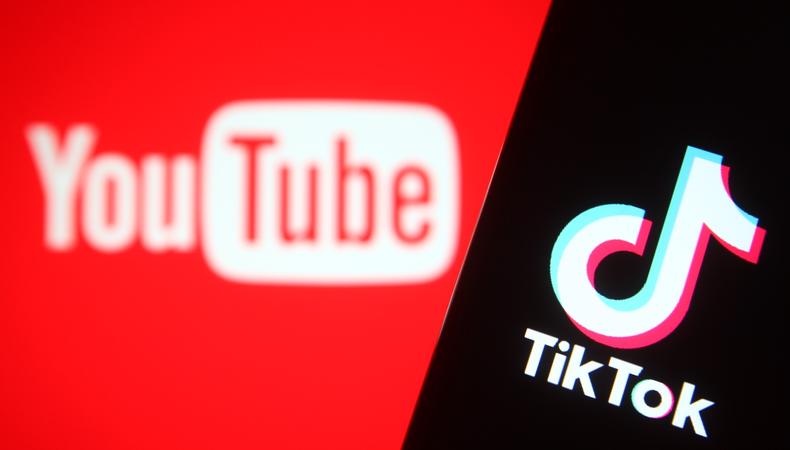In today’s digital age, creators have a plethora of platforms at their disposal, but two of the most prominent names that stand out are TikTok and YouTube. Each platform offers unique features, audiences, and opportunities, making it essential for creators to understand where they can thrive best. This article dives deep into the comparisons between TikTok and YouTube, helping creators make an informed decision on which platform to choose.
Platform Overview
TikTok
TikTok is a short-form video platform that has taken the world by storm. Launched in 2016, it allows users to create and share 15 to 60-second videos, often set to music. The platform’s rapid growth can be attributed to its engaging features, such as filters, effects, and easy-to-use editing tools. The primary demographic on TikTok consists of younger users, particularly Gen Z, who favor quick, entertaining content. TikTok’s unique algorithm showcases personalized content to users, enhancing engagement.
YouTube
YouTube, founded in 2005, is the go-to platform for long-form video content. With its extensive library of videos ranging from tutorials and vlogs to documentaries and music videos, YouTube caters to a wide range of interests and demographics. While it also allows short-form content (YouTube Shorts), its traditional format is centered around longer videos that can be anywhere from a few minutes to several hours. YouTube’s audience spans across all age groups, making it a versatile platform for creators.
Audience Engagement
TikTok
TikTok is known for its high engagement rates, with users often spending hours scrolling through the “For You Page.” The platform encourages interaction through likes, comments, and shares, allowing creators to quickly gain visibility. TikTok’s unique challenge formats and trends foster a sense of community and encourage participation, which can significantly boost engagement.
YouTube
YouTube, while traditionally slower in terms of virality compared to TikTok, offers robust engagement tools such as comments, likes, and community posts. Creators can build a dedicated subscriber base, enabling long-term relationships with their audience. However, the engagement may not be as instantaneous as TikTok’s, as viewers often consume content more passively.
Monetization Opportunities
TikTok
TikTok offers creators several monetization options, including the TikTok Creator Fund, brand partnerships, and live stream gifts. However, the revenue potential can be limited compared to YouTube, as creators typically earn based on views and engagement rather than ad revenue.
YouTube
YouTube is renowned for its monetization opportunities. Creators can earn money through ad revenue, channel memberships, Super Chats during live streams, and brand partnerships. With a more established monetization model, successful YouTube creators can generate substantial income, particularly from longer videos that accommodate multiple ads.
Content Creation Tools and Features
TikTok
TikTok provides a plethora of editing tools, filters, and effects that enable creators to produce high-quality content quickly. The platform’s user-friendly interface makes it easy for even novice creators to produce engaging videos. TikTok also promotes trends and challenges, offering a rich source of inspiration for content creation.
YouTube
YouTube’s editing features are more advanced, allowing for complex video production. Creators can use external software for video editing and then upload their content. YouTube also offers analytics tools to help creators understand their audience better and optimize their content accordingly.
Algorithm and Discoverability
TikTok
TikTok’s algorithm is designed to promote engaging content, allowing videos to go viral quickly. The algorithm analyzes user interactions, video information, and device/account settings to determine what to showcase on the “For You Page.” This means that even new creators can achieve significant reach if their content resonates with viewers.
YouTube
YouTube’s algorithm is more complex, focusing on watch time, engagement, and click-through rates. While it takes longer for new creators to gain traction, the platform rewards consistent, high-quality content with better visibility over time. This fosters a more stable growth environment for creators who can produce longer, more engaging content.
Community and Networking
TikTok
TikTok fosters a sense of community through its interactive features, allowing creators to respond to comments and collaborate easily. The platform encourages users to engage with each other, often leading to viral challenges and trends that boost visibility for all participants.
YouTube
YouTube enables creators to build communities through comment sections, live streams, and community posts. Collaboration with other creators is common, often resulting in cross-promotion that can significantly increase subscriber counts for both parties. The platform also allows for longer, more in-depth interactions, helping to build a loyal audience.
Pros and Cons of Each Platform
TikTok
Pros:
- High engagement and virality potential.
- User-friendly content creation tools.
- Strong sense of community through challenges and trends.
Cons:
- Limited monetization opportunities compared to YouTube.
- Content lifespan can be shorter due to rapid trends.
YouTube
Pros:
- Established monetization options and revenue potential.
- Long-form content allows for in-depth storytelling.
- Comprehensive analytics tools for audience understanding.
Cons:
- Slower growth for new creators.
- More time-consuming content creation process.
Conclusion
Both TikTok and YouTube offer unique advantages and challenges for creators. TikTok is ideal for those looking to create quick, engaging content and reach a younger audience, while YouTube is better suited for creators focused on long-form content and monetization. Ultimately, the choice between TikTok and YouTube depends on the creator’s goals, content style, and target audience.
For more tips and strategies on maximizing your TikTok presence, visit free tiktok views.

